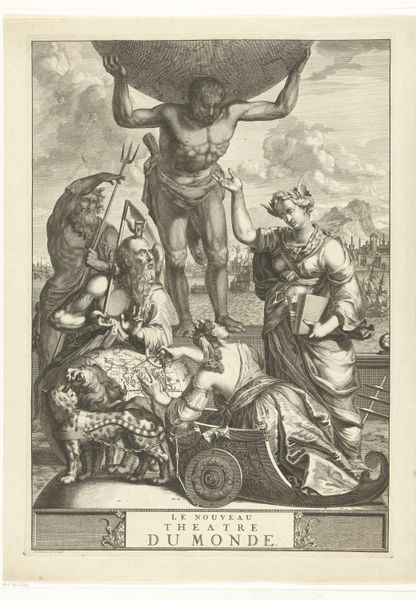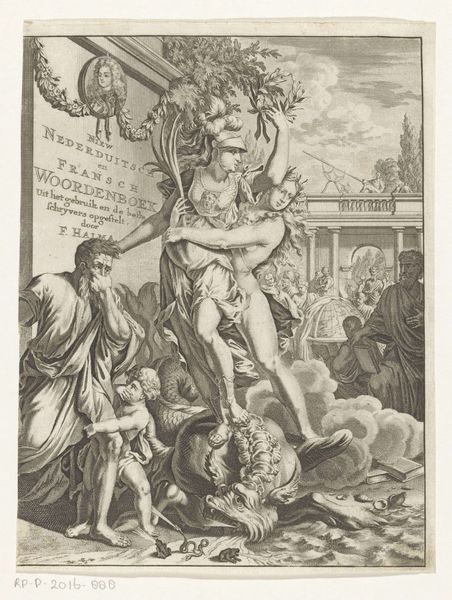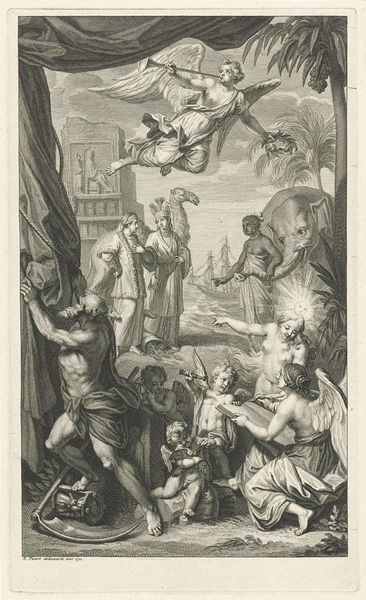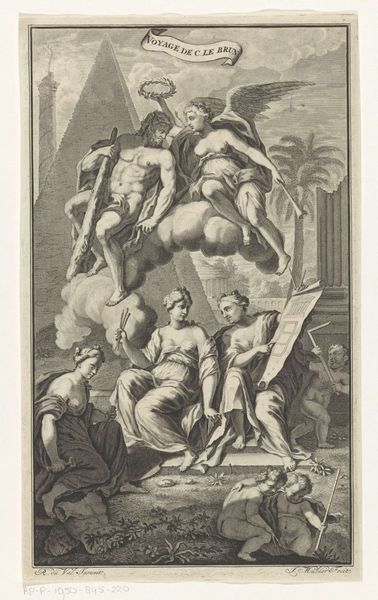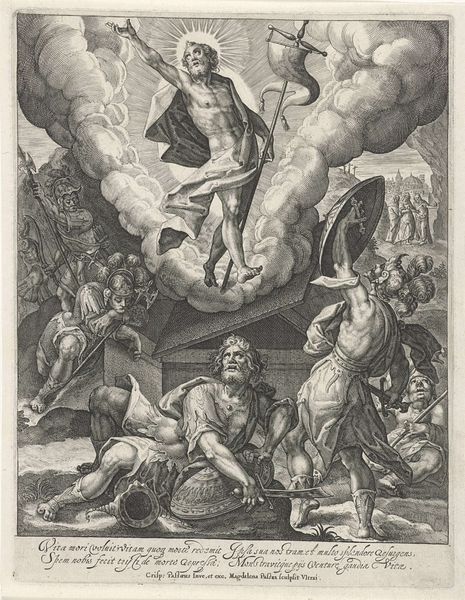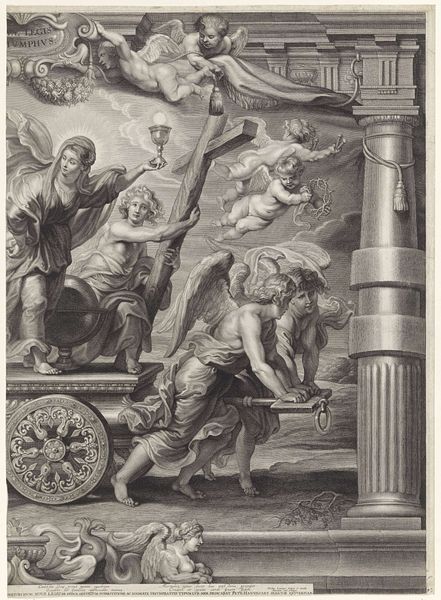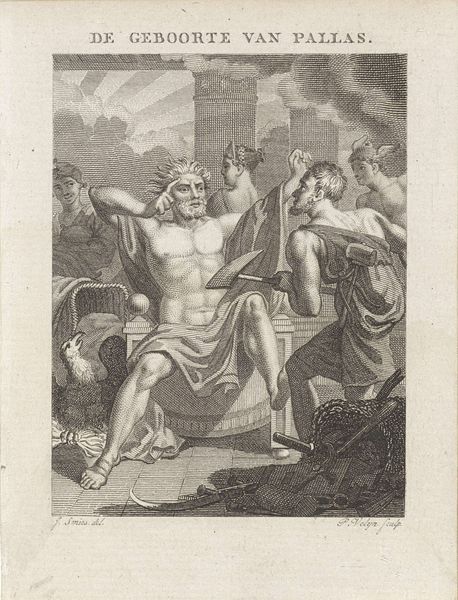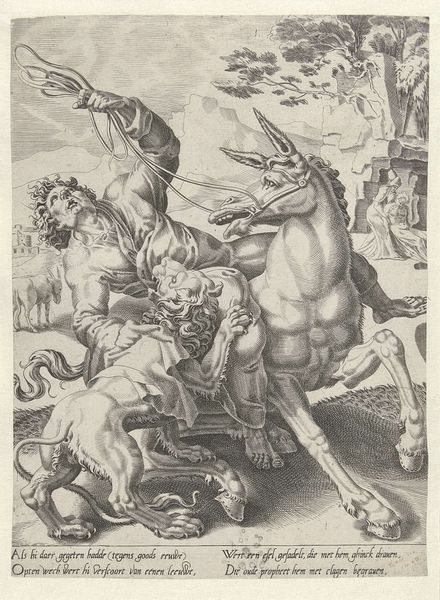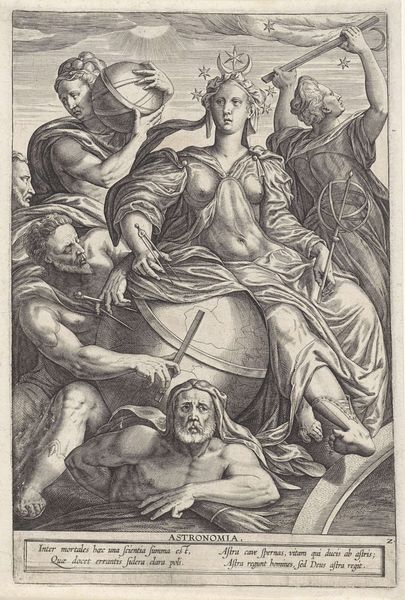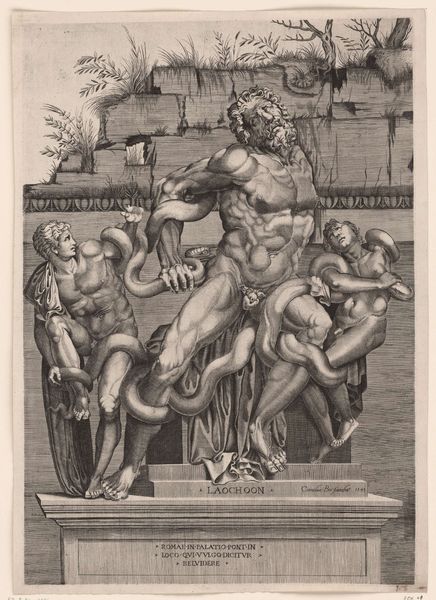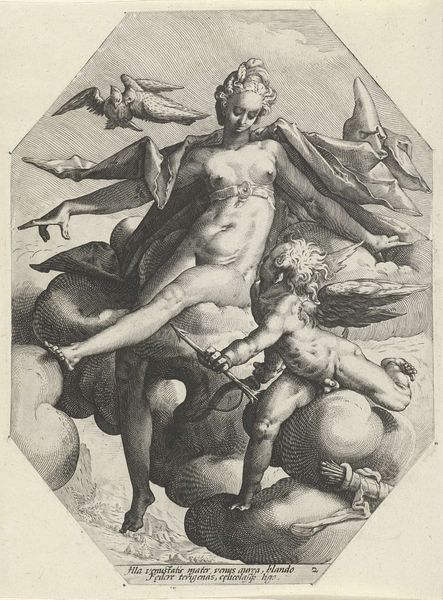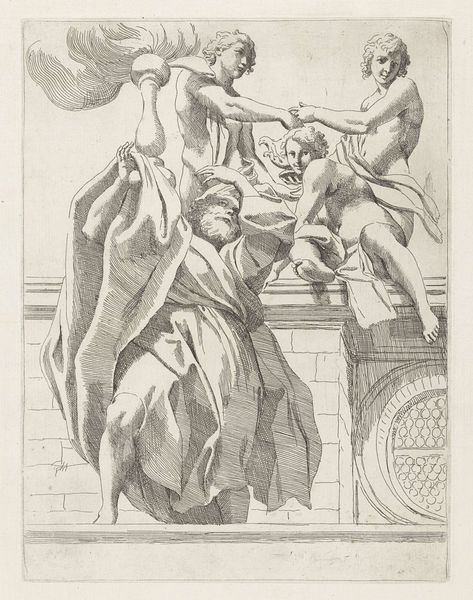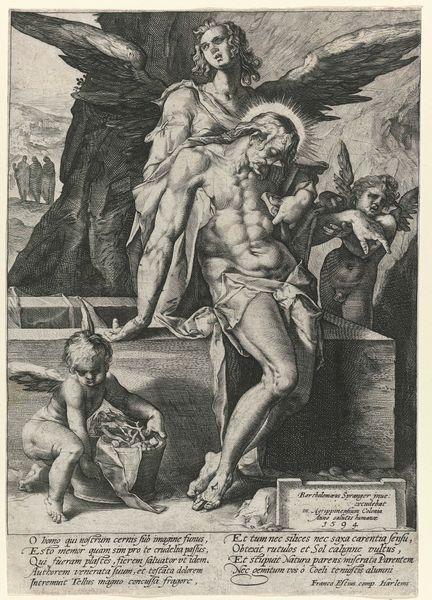
Mercurius ontdekt de geschiedenis van het mysterie van Egypte 1650
0:00
0:00
cornelisbloemaert
Rijksmuseum
engraving
#
allegory
#
baroque
#
figuration
#
surrealism
#
portrait drawing
#
history-painting
#
engraving
Dimensions: height 295 mm, width 208 mm
Copyright: Rijks Museum: Open Domain
Curator: This engraving, conceived by Agostino Caramelli and executed by Cornelis Bloemaert around 1650, is titled "Mercurius Discovers the History of the Mystery of Egypt." It's an allegorical scene, full of classical figures and esoteric symbolism. What strikes you first about this piece? Editor: The sheer density of figures and symbols is overwhelming. It feels like a baroque attempt to capture all of history in one go. There's a theatrical quality to the arrangement, but also something deeply unsettling about the expressions on these figures' faces. Curator: Well, the Baroque period often used drama to convey meaning. Consider how Mercurius, or Hermes, the messenger god, dominates the center. He’s unrolling a scroll revealing hieroglyphs, hinting at the rediscovery of ancient Egyptian knowledge. This unveiling held immense interest during the Renaissance and Baroque periods, connected to the quest for ancient wisdom. Editor: And what does it mean to represent this history as a 'mystery?' What kind of power dynamic is at play when certain knowledge is veiled, and who gets to unveil it? Notice also how European architecture flanks an Egyptian pyramid on the right? It is staged with one another, signifying dominance and perhaps foreshadows later European forays into Egyptian territory. Curator: That is a sharp reading. The prominence of Egypt, though, does signify a growing interest in, and idealization of, Egyptian culture in Europe, even a sort of "Egyptomania". And the presence of figures blowing trumpets suggests proclamation – a celebration of rediscovered knowledge available, at least, to some. It reflects broader historical trends and artistic interpretations of knowledge acquisition during that time. Editor: That “rediscovery” also plays into a Western-centric view of knowledge production. As if Egypt needed to be 'discovered' rather than being an ongoing, evolving civilization. This piece certainly encourages us to think about what’s considered knowledge, who controls its dissemination, and who benefits from it. I find it an unsettling display. Curator: Perhaps unsettling because it prompts these crucial questions of our modern experience with ancient material. It is always important to remember how these works functioned as cultural objects within very specific contexts. Editor: Precisely. It serves as a potent reminder of art's connection to politics.
Comments
No comments
Be the first to comment and join the conversation on the ultimate creative platform.
